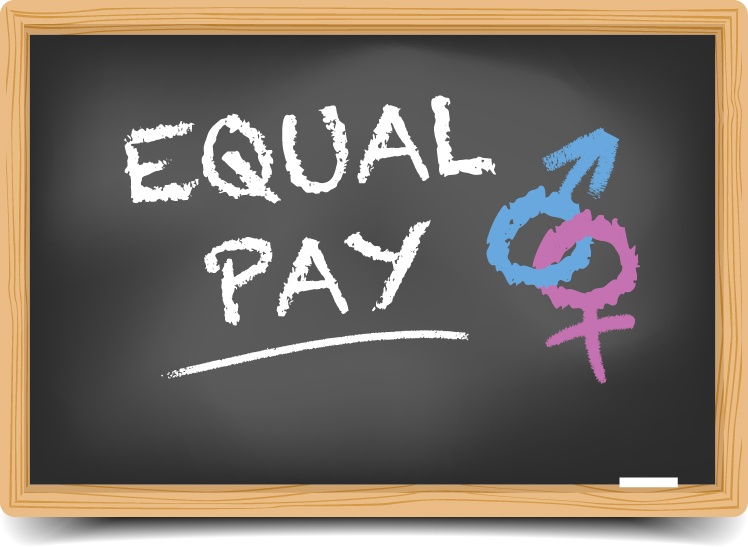The COVID-19 pandemic has transformed the employment marketplace, and one area which it has definitely impacted is that of the interviewing of candidates. When states across the country first started implementing lockdowns in 2020, in-person interviewing was hard to...
The Applicant Manager Blog
Subscribe to Email Updates
Search
Recent Posts
Search Results

3 Important Questions to Ask About Employment Credit Reports
 When New York City passed the nation’s most severe restrictions on employment credit reports in 2015, it joined 11 states and several other cities that limit the practice. Similar legislation is pending in 17 other states and at the federal level.
When New York City passed the nation’s most severe restrictions on employment credit reports in 2015, it joined 11 states and several other cities that limit the practice. Similar legislation is pending in 17 other states and at the federal level.
Even in places that have passed bans, though, exemptions exist. That’s because, despite the controversy, employment credit checks play an important – and in some cases required – role in due diligence around hiring.
The Controversy
A 2012 survey from the Society of Human Resource Management found that 45% of employers run employment credit reports to reduce or prevent theft, while 22% run them to reduce legal liability for negligent hiring.

9 Recruiting Resources You Won’t Want to Miss

As a recruiter, it’s easy to get so buried in the weeds at times that we forget there are thousands of other people out there having the same challenges and asking the same questions. Indecisive hiring managers, frustrating candidates, too many requisitions to fill, and not enough hours in the day. The good news is that in those moments when you come up for air, or at least another cup of coffee, there are resources available to not only support you, but to remind you that you are never in this recruiting gig all alone.
There are some fantastic sites and blogs out there that if you’re not already familiar with, are worth your time to check out. The following list is made up of resources that provide a world of information on recruiting and Human Resources, but not in the most traditional way, which is just one of the many things that make them so enjoyable. read more…

Have You Seen What Your Employees Are Saying About You?
 Years ago, companies could hide behind their impressive buildings and stock earnings, leaving potential employees wishing for a glimpse behind the marble-tiled foyer to find out how it might feel to be one of “them”. Knowing someone who worked there might be the lucky break that could give them the inside scoop they needed to find out bits of knowledge regarding salaries, corporate culture, and advancement opportunities. This would sometimes be all the first-hand information available to a job-seeker before deciding to interview with a company they admired from afar.
Years ago, companies could hide behind their impressive buildings and stock earnings, leaving potential employees wishing for a glimpse behind the marble-tiled foyer to find out how it might feel to be one of “them”. Knowing someone who worked there might be the lucky break that could give them the inside scoop they needed to find out bits of knowledge regarding salaries, corporate culture, and advancement opportunities. This would sometimes be all the first-hand information available to a job-seeker before deciding to interview with a company they admired from afar.
Those days are over.
Not only are companies more purposely transparent through the use of websites and a heavy social media presence, but because of sites like Glassdoor, a TAM Integration Partner, their current and past employees have the opportunity to share anything they care to about things like pay, benefits, working conditions, hours, growth potential, and leadership. (see below information on the upcoming Glassdoor webinar)

California Leads Nation in Gender Pay Reform
 For over fifty years there have been laws in place requiring equal pay for men and women doing the same job. Even so, discrepancies in pay still persist. In California, where the new equal pay law, the Fair Pay Act, went into effect the first of the year, data introduced into legislation shows women being paid 84 cents for every dollar made by their male counterparts.
For over fifty years there have been laws in place requiring equal pay for men and women doing the same job. Even so, discrepancies in pay still persist. In California, where the new equal pay law, the Fair Pay Act, went into effect the first of the year, data introduced into legislation shows women being paid 84 cents for every dollar made by their male counterparts.
The Fair Pay Act, voted in with virtually no opposition, aims to make it harder for employers to require employees to do the same work, but pay some workers less because of job titles. Now, companies will be required to really take a look at each position, and the work required, and assess pay based upon the work actually being done. Rather than justifying pay with job titles, employers will need to thoroughly assess job responsibilities and requirements.
This new law may be most beneficial to those in positions typically classified as laborers such as housekeepers. In this example, a housekeeper commonly does the same work as a custodian, but because of their job title, is paid a lower rate.
Pay inequality may exist due in large part to the fact that people don’t know they’re being under paid. Within most companies, the culture is such that discussing pay is strictly prohibited. The Fair Pay Act prevents employers from terminating or punishing workers who discuss their pay with coworkers.

Five Great Reasons for Building an Employer Brand

Finding top talent in today’s marketplace has completely changed, and merely posting open job opportunities fails to draw in candidates. People want to find more than a job; they want to find a career that connects with their own values and goals, while making a difference larger than themselves.
There are companies with employer brands so strong that landing a job with them has become something of a status symbol. What makes these companies so successful at attracting potential employees is the message they’re sending out about themselves.
read more…

Why Most Independent Contractors May Be Considered Employees

There are plenty of reasons that some people choose to go out on their own and work as independent contractors: flexible hours, unlimited income potential, control over income taxes, and control over the trajectory of their careers. There are also many reasons companies like to hire independent contractors, two of the most common being scalability and cost.
Some companies question when they should begin to transition from hiring independent contractors to full-time employees, but a more serious question should be, are your independent contractors already employees who have been misclassified? According to the U.S. Department of Labor (DOL), most workers are employees. The DOL issued a guidance in July of 2015 stating that the “misclassification of employees as independent contractors is found in an increasing number of workplaces in the United States…”. The guidance goes on to state that when employees are improperly classified, those workers may not receive protections common in the workplace, such as minimum wage pay, overtime compensation, unemployment insurance, and workers’ compensation. The reality is that this is another one of the situations where “it’s good until it’s not.” Thus, the problem is that employees classified as independent contractors will request to be classified as such until they realize that they are in dispute with their employer, e.g., they are terminated and request benefits normally provided to employees.
read more…

What Is the Best Job Board?
>

With all the job boards available, it’s not always easy to decide where your time and money are best spent. So what is the best job board? The short answer – there really isn’t just one. Not for everyone, anyway. There are, however, better ones. The key is figuring out what makes sense for your business, and to spend your time and money in those places. Let’s begin by breaking things down…

Company Culture- Is There Such a Thing as Bad Crazy Versus Good Crazy?

Most everyone is familiar with the fun, “crazy” culture at famous tech companies like Google and Facebook. Napping pods, comfy lounge spaces, game rooms, free food, and putting greens are certainly a diversion from most corporate environments. It’s common for startups to take a new approach, after all, there are certain risks associated with being different that commonly pay off. There are times, however, when this is not the case.
Bad Crazy
In early February, CEO and founder of Zenefits, Parker Conrad, resigned from his position at the Human Resources software startup. The underlying cause? According to newly appointed CEO, well-known Silicon Valley entrepreneur, David Sacks, “Our culture and tone have been inappropriate for a highly regulated company.”
read more…

How Better Recruiting Reduces Turnover and Cost Per Hire

Recruiting has changed. The advent of so many startups, a new generation of workers, social media and technology, have all changed the game. Not only has the way we go about crafting job descriptions and posting roles changed, but even the start of the recruiting phase now begins well before a position is actually open. With everything that is evolving within talent acquisition, what hasn’t changed is that better recruiting leads to lower turnover and a lower cost per hire.
Consequences of a Bad Hire – Beyond Turnover Cost
This recent study shows the average cost per hire to be at $4,000. But what is the turnover cost per hire if they’re bad hires? Turnover costs are estimated to be one-third of a new hire’s annual salary or more in order to replace them. However, the consequences of making a bad hire go beyond this. There are other costs as well, such as reduced morale among employees, disruption to a department, slower production, an increased workload, and depending on their position, the potential of lost sales or customers.
There are a whole host of factors that contribute to employee turnover; boredom, low pay, lack of recognition, limited advancement opportunities, dissatisfaction with management. However, one of the largest reasons for high turnover, 80% according to a statistic by The Harvard Business Review, is due to making a poor hiring decision in the first place.

